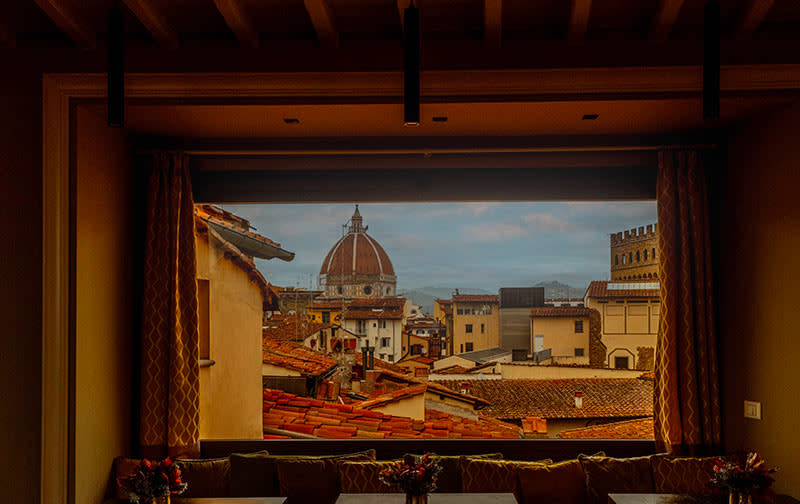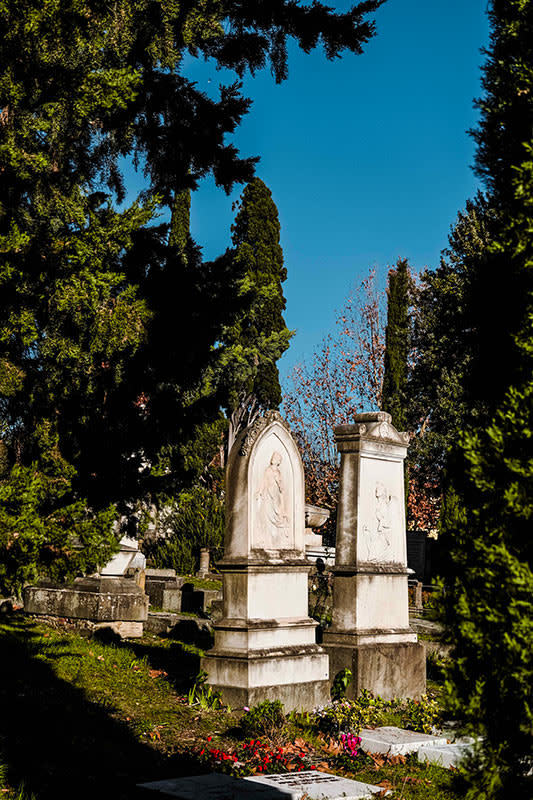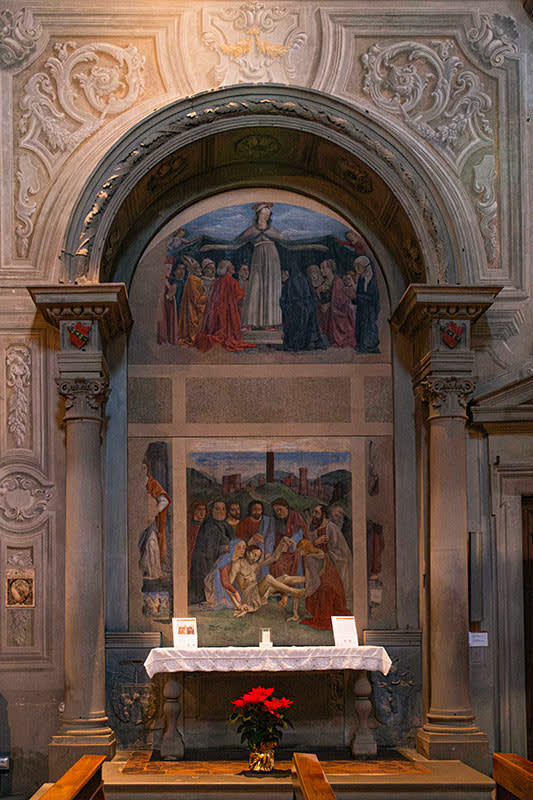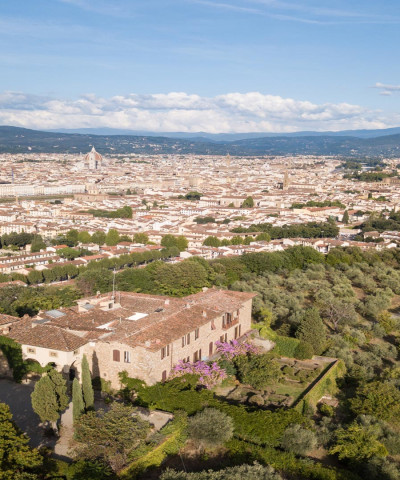English and American places in Florence
The symbols of a strong bond that has distant origins
Not even the worst bankruptcy could prevent love from blossoming between the Anglophones and the Florentines. In 1345, Kind Edward III decided not to give back the huge sum he had borrowed from bankers Bardi and Peruzzi to finance the war against France. The two companies went bankrupt risking to take the whole city down with them. The city, however, maintained its leading financial position in Europe, where Florentine was the most spoken language. And not only there. Even John Hawkwood (1320-1394), knighted by King Edward, learned it, left England and its never-ending war and moved to Italy. He served as a mercenary leader for Pisa and then for Florence, which would bury him in the Duomo and honor him with a fresco by Paolo Uccello.
And he was not the only turncoat. The Duke of Northumberland, Robert Dudley (1573-1649), was one of Elizabeth I’s favorite statesmen until the day he arrived in Florence, where he converted to Catholicism and remarried. For the Grand Dukes, he widened the port of Leghorn, planned expeditions to America and privateer wars in the Mediterranean. Can it be a mere coincidence that his palazzo, on Via della Spada, looks like a ship’s head?
However, Dante, Petrarca and Boccaccio were those who attracted intellectuals and aristocrats to Florence. John Milton (1608-1674) was inspired by Dante to write his Paradise Lost at Palazzo Gaddi. Because of its art, its mild climate to treat lung diseases and the affordable luxury lifestyle it offered, Florence became a second home for many British citizens. For Oscar Wilde (1854-1900), who fell in love with the Etruscans and the Archeological Museum housed in the Fuligno monastery at the time. And also for Charles Dickens, Henry James, Mark Twain and Mary Shelley. John Ruskin (1819-1900) put down roots in Florence, leaving us with his precious Mornings in Florence.
 A spectacular view on the city from the Hotel degli Orafi
A spectacular view on the city from the Hotel degli OrafiDuring the 1700s and 1800s, a third of the population was said to be Anglo-American. Perhaps that is an exaggeration, but it is true that new churches were established, two Anglican churches, including St Mark on Via Maggio in one of Machiavelli’s palazzos and the American St James on Via Oricellari. The Lungarni were covered with sand to prevent the noise of moving carriages from disturbing the sleep of the wealthy guests. And it is no chance that, in 1827, the English Cemetery was opened on a spectacular hillock, today a traffic island on Piazzale Donatello, where Robert and Elizabeth Browning, the leaders of the literary coterie at Casa Guidi (now a house-museum) opposite Palazzo Pitti, rest. Buried there are also Harold Acton (1904-1994), the writer and historian who left Villa La Pietra, in addition to the British Institute’s Library (Palazzo Lanfredini along Lungarno Guicciardini), the oldest and most well-stocked library outside of England) to the New York University; the American Bernard Berenson (1865-1959), a Renaissance scholar who transformed Villa I Tatti into the prestigious Harvard University; Herbert Horne (1864-1916), art historian and collector, who came to Florence to treat his tuberculosis and ended up buying a palazzo on Via dei Benci, leaving us with a beautiful museum in one of the city’s best-preserved Renaissance buildings, just like Frederick Stibbert (1838-1906), who renovated a villa in a mix of different styles, opening the eclecticism season. Today the museum (Via Stibbert) showcases age-old suit of armour collections. And the year Stibbert died, Buffalo Bill entertained a full house with his show at the Cascine park. Those were the years when Florence seemed to be the romantic city par excellence. David H Lawrence,a TB sufferer himself, wrote Lady Chatterley’s Lover here, too licentious to be published elsewhere.
 The English Cemetery an Evangelical cemetery located at Piazzale Donatello
The English Cemetery an Evangelical cemetery located at Piazzale DonatelloIt was in Florence -in Fisole to be exact - that the genius behind the Guggenheim and Fallingwater buildings, American architect Frank Lloyd Wright, had a long affair with the wife of one of his clients. The couple found shelter in the lovely Villino Belvedere in Fiesole. The lover of King Edward VII, Alice Keppel (1868-1947), lived at Villa dell’Ombrellino in Bellosguardo to escape the criticism in her homeland. It is interesting to note that she was Queen Camilla’s great-grandmother and the King was Charles III’s great-great-grandfather.
 The Vespucci Chapel frescoed by Domenico Ghirlandario in the Church of Ognissanti
The Vespucci Chapel frescoed by Domenico Ghirlandario in the Church of OgnissantiHow many coincidences. But we are talking about the early 1900s, after all. The same years Edward M. Forster published one of his first novels, A Room with a View, which James Ivory in 1985 turned into the movie partly filmed at the Quisisana Guest House on Lungarno Archibuseri. Unfortunately, the guest house, very popular with travelers back then, would be severely damaged by the Georgofili bombing in 1993. Today it is called Hotel degli Orafi and there is a room dedicated to the two lovers. Actually, the famous kiss with the Ponte Vecchio in the background was filmed in the Oltrarno neighborhood. But the book and movie give a good idea of what the Anglo-Americans’ life in Florence was like, including séances and golf playing. Italy’s first golf course was established in Florence, at first in the Novoli area and then, in 1934, owing to architects Cecil Blandford and Peter Gannon, in Impruneta along the Chiantigiana road. The 18-hole Ugolino club is one of the world’s best and most challenging golf courses. And it is not Florence’s only record: the first American Consulate was born here. In 2019, it celebrated its 200th anniversary. Since 1949, it has been housed in Palazzo Calcagnini on Lungarno Vespucci, the Arno river bank named after the Florentine navigator, explorer and cartographer Amerigo (1454-1512), who gave his name to the American continent. A very young Amerigo was portrayed by Ghirlandaio in his family’s chapel in the Church of Ognissanti, where he is said to have been buried.
Less celebrated than Vespucci was Giovanni da Verrazzano (1485-1528) - the Castle in Greve belonged to the same family - who discovered the bay of New York (although for centuries the discovery was attributed to Henry Hudson) and mapped the coast from Florida to Newfoundland.
Florence, just like New York, named a bridge after him. It is very likely that the French Bartholdi drew inspiration from the Statue of Liberty designed by Pio Fedi (1816-1892) in the Church of Santa Croce, the Liberty of Poetry, for the tomb of Giovan Battista Niccolini, when creating his own statue.
And everyone remembers the substantial American help provided for the 1966 flood when Ted Kennedy was one of the mud angels. And what about universities? Florence is home to about thirty colleges attended by over 18 thousand American students only in 2023.










